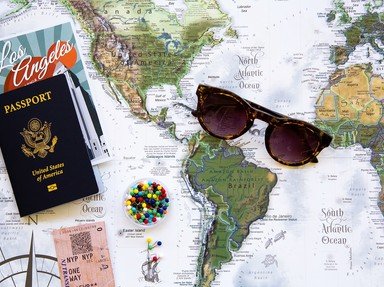Quiz Answer Key and Fun Facts
1. What was the name of the politician Victor Hugo supported at first, but against whom he later wrote a collection of poems?
2. Finish the famous sentence "Les sanglots longs des violons de l'automne..." :
3. "Demain, dès l'aube, à l'heure où blanchit la campagne, je partirai. (...) Et quand j'arriverai, je mettrai sur ta tombe un bouquet de houx vert et de bruyère en fleur."
This is the beginning and the end of a very famous poem, learned at school by almost every little child, which was written by a father who had lost his beloved daughter. Who is this man?
4. "La cigale et la fourmi" (the cicada and the ant), "Le loup et l'agneau" (the wolf and the lamb), "Le chêne et le roseau" (the oak and the reed), "Le chat, la belette et le petit lapin" (the cat, the weasel and the little rabbit)...
One could name a lot of these particular poems, written during the 17th century by a man who knew many of the great characters of his time. I will not give you the name of the writer, it would be too easy, but can you give me what is the literary form of this kind of poem ?
5. Charles Baudelaire, a nineteenth century poet, translated into French certain English works.
6. Pierre de Ronsard is one of the most famous poets of the Renaissance period. He was inspired by three women, Cassandre, Hélène and Marie. To each one he wrote a collection of poems, which bore their name. Which poetic form did Ronsard often use in these works?
Hint : It is the title of the collection of poems dedicated to one of the women.
7. "La rose et le réséda" (the rose and the reseda), "Les fusillés de Châteaubriant" (the men shot in Châteaubriant), "Strophes pour se souvenir" (Stanzas to remember), "Liberté" (liberty)...
All these poems were written by different people, but with the same purpose. Can you tell me what movement these works belong to?
8. Charles Baudelaire (1821-1867) changed many things and broke new grounds in poetry. What did he do, among other things?
9. What is the name of a certain state of mind, which came from England and greatly influenced the 19th century poets?
10. In France, from the Middle-Age, almost every century or period has its own kind or style of poetry. However there was one century during which there were almost no poetic works. Which one?
Hint : this century has a nickname!
Source: Author
Quiterie
This quiz was reviewed by FunTrivia editor
LeoDaVinci before going online.
Any errors found in FunTrivia content are routinely corrected through our feedback system.

